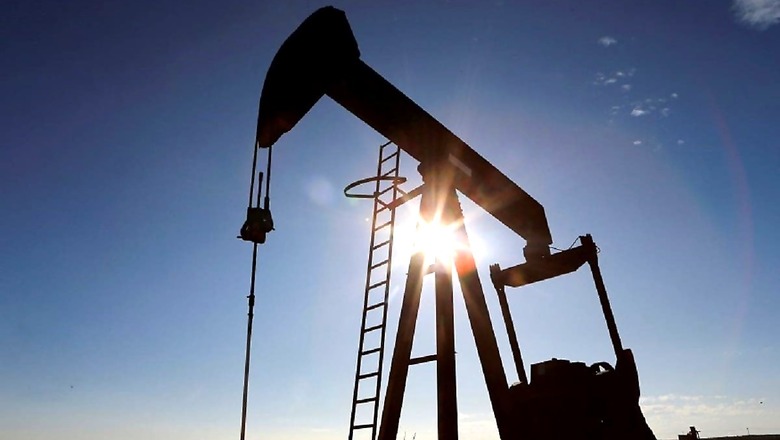
views
Brent slid nearly 4 per cent to below $80 a barrel on Friday as a new COVID-19 variant spooked investors, adding to concerns that a global supply surplus could swell in the first quarter following the release of crude reserves by the United States and others.
Oil fell in tandem with other financial markets on fears that the new variant could slow economic growth and restrict movement again.
Brent crude futures extended declines for a third session, falling $3.16, or 3.8 per cent, to $79.06 a barrel by 0733 GMT. US West Texas Intermediate (WTI) crude was down $3.45, or 4.4 per cent, at $74.94 a barrel. There was no settlement for WTI on Thursday because of the Thanksgiving holiday.
“Oil prices have gapped lower in Asia as the South African variant sparks’ growth fears, sending a wave of selling through Asian energy markets,” Jeffrey Halley, a senior analyst at brokerage OANDA, said in a note.
Also in focus is China’s response to US President Joe Biden’s administration announcing plans on Tuesday to release millions of barrels of oil from strategic reserves in coordination with other large consuming nations to try to cool prices.
Such a release is likely to swell supplies in coming months, an OPEC source said, according to the findings of a panel of experts that advises ministers of the Organization of the Petroleum Exporting Countries (OPEC).
The Economic Commission Board (ECB) expects a 400,000 barrel-per-day (bpd) surplus in December, expanding to 2.3 million bpd in January and 3.7 million bpd in February if consumer nations go ahead with the release, the OPEC source said.
Forecasts of rising surplus oil clouds the outlook of the meeting between OPEC and its allies, a group known as OPEC+, on Dec. 2 to decide on immediate production. The group is to decide whether it will continue raising output by 400,000 bpd in January.
OPEC is unlikely to alter its path of gradually growing output if prices remain between $80 and $85 a barrel, OCBC economist Howie Lee said.
“I don’t think we’ll see $100 oil if the market reverts to a surplus by Q1,” he added.
Still, the overall volume of the crude reserve release – estimated at 70 million to 80 million barrels – was smaller than market participants expected.
“Since the volume is small, I think it is aimed at easing tightness in supply, rather than having a big impact on oil markets,” Tsutomu Sugimori, president of the Petroleum Association of Japan (PAJ), told reporters late on Thursday.
Next Monday, world powers and Iran will resume negotiations to revive a 2015 nuclear deal that could lead to the lifting of U.S. sanctions on Iranian oil exports.
However, the failure of Iran and the International Atomic Energy Agency to reach even a modest agreement on monitoring of Tehran’s nuclear facilities this week bodes poorly for next week’s talks, Eurasia analyst Henry Rome said.
“That Iran did not do so, and instead took a hard line with the IAEA, is another negative sign about its interest in reviving the 2015 nuclear agreement,” he said in a Nov. 24 note.
Read all the Latest Business News here



















Comments
0 comment